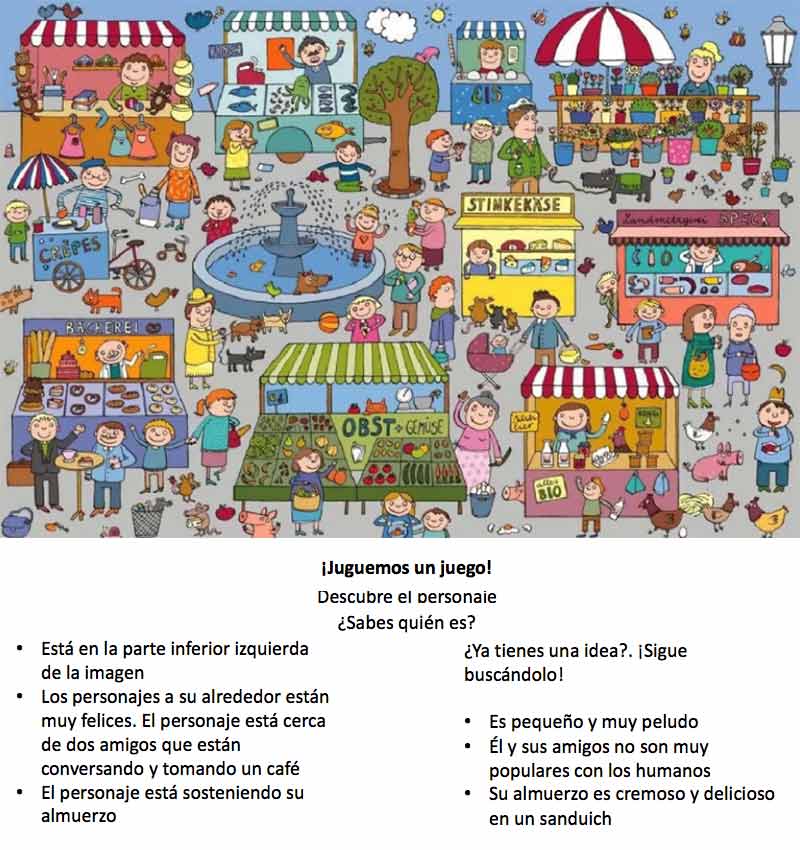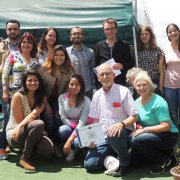Mastering the Spanish Language: Verbs ‘Ser’ and ‘Estar’
Learning a new language is not always easy.
But we promise learning Spanish is a lot of fun!
One of the most difficult topics for Spanish language learners is the use of the verb “To be”, which in Spanish is divided into two verbs: “Ser” and “Estar”.
“To be” (ser) or “To be” (estar)… that’s the question.
Don’t pull your hair out when deciding whether to use “ser” or “estar”.
We know it can be tricky since the distinction between those two doesn’t exist in other languages.
Therefore, we have prepared some tips and tricks for you to learn how to use properly this verb.
Let’s start with the basics!
What’s the difference between “Ser” and “Estar”?
Putting it in a simple way:
- “Ser” is used when describing permanent things, while
- “Estar” when describing temporary things.
Confusing?
Don’t worry! In general, people understand what you want to say by the context. But it’s better when you feel confident speaking a new language, isn’t it?
So, we are here to help you speak Spanish properly.
Now, let’s go to the tips and tricks!
When do you use “Ser” and when do you use “Estar”?
The verb “Ser”
“Ser” describes a permanent state of what some people called “the essence of things”. It is generally used to describe people’s traits and to describe object characteristics.
What does it mean?
The things that make something what it is and things that are unlikely to change.
“Ser” is used for the following situations:
Time & Date:
- ¿Qué hora es? (What time is it?)
- Mañana es miércoles. (Tomorrow is Wednesday)
- Mi cumpleaños es el 5 de Julio. (My birthday is on the 5th July)
Place of origin and Nationality
- Yo soy de Bogotá. (I’m from Bogotá)
- Mis padres son Colombianos. (My parents are Colombians)
Occupation
- María es profesora de francés. (María is a French teacher)
Religious or political affiliation
- Yo soy Cristiano, ella es Budista. (I’m Christian, she’s Buddhist)
The material something is made of
- Esas son botellas de plástico. (Those are plastic bottles)
Possession
- El carro es mío, la bicicleta es tuya. (The car is yours, the bike is yours)
Relationship of one person to another
- Andrés es mi hermano. (Andrés is my brother)
Where an event is taking place
- La reunión es en la oficina de Carolina. (The meeting is at Carolina’s office)
Physical and personality traits
- Camila es muy linda y además es súper chévere. (Carolina es so pretty and she’s also very nice)
When we use Passive voice
Cien años de Soledad fue escrito por Gabriel García Márquez. (One Hundred Years of Solitude was written by Gabriel García Márquez)
The verb “Estar”
In contrast,
“estar” describes a non-permanent state or condition; something that is likely to change.
“Estar” is used for the following situations:
Geographic or physical location (except when speaking about events)
- – ¿Dónde estás? – Hoy estoy en Cali pero mañana voy a Barranquilla. (Where are you? I’m in Cali today but tomorrow I’m going to Barranquilla)
- Las llaves están sobre la mesa. (The keys are on the table)
State or condition (like emotions)
- Estoy super triste hoy (I’m so sad today)
- Estoy muy cansado porque he trabajado todo el día. (I’m very tired because I have been working all day)
When describing something in the moment
- La fiesta está buenísima! (The party is so cool!)
- La sopa está caliente! (The soup is hot!)
To describe how food tastes
- Este helado está delicioso. (This ice cream is delicious)
Many idiomatic expressions
- ¡La casa está patas arriba! (The house is a mess!)
- ¡Ponme atención, parece que estás en la luna! (Pay attention to me, you’re miles away!)
Progressive tenses (-ing)
- ¿Qué haces? – Estoy almorzando. (What are you doing? – I’m having lunch)
- Me encontré a Pedro ayer cuando estaba corriendo. (I met Pedro yesterday while I was running)
Easy, right?
So, what’s the tricky part?
Well, the tricky part comes when you can use either “ser” or “estar” in the same sentence; both are correct but they mean something totally different.
How’s that?…
For example, according to the rules mentioned above, if you say:
“Yo estoy de Colombia” -> It’s NOT correct.
“Yo soy de Colombia” -> It’s correct
(I’m from Colombia)
Or,
“Soy tomando café”. It’s NOT correct.
“Estoy tomando café”. It’s correct
(I’m drinking coffee)
But, there are some sentences in which you can use either “Ser” or “Estar” and both are correct. It depends on the context and depends on what you want to say.
For example:
Eres muy linda! -> It’s correct
Estás muy linda! -> It’s correct
(You are beautiful)
What? How is that possible?
The first one “Eres muy linda” can be used when someone is saying to a girl that she is pretty (all the time), It’s a physical trait.
The second one “estás muy linda” can be used when someone is saying to a girl that she is (particularly) pretty on a certain day, or with certain clothes.
Sometimes people use a complement in a sentence, something like “estás muy linda hoy con ese vestido” (You’re so pretty today with that dress”. But sometimes native Spanish speakers don’t use the complement of the sentence because it is understood by the context.
Other examples:
La comida de este restaurante es deliciosa. -> It’s correct
La comida de este restaurante está deliciosa. -> It’s correct
(The food at this restaurant is delicious)
It all depends on what you want to say. If you think the food in the restaurant is “always” or “generally” delicious you would say “La comida de este restaurante es deliciosa”.
Or if you want to emphasize that on a particular day the food in the restaurant is delicious, you would say “La comida de este restaurante está deliciosa”.
These are simple examples. Even though they have different meanings it’s not a big deal if you use one or the other.
But there are some scenarios where, if you pick the wrong verb, things can get lost in translation.
“Ser” aburrido (to be boring) vs. “estar” aburrido (to be bored)
If you want to describe someone’s personality:
Sofía is aburrida (Sofía is boring)
If you want to describe someone’s mood:
Sofía está aburrida (Sofía is bored)
1. “Ser” listo (to be clever) vs. “estar” listo (to be ready)
- If you want to say someone is smart or intelligent. Being smart is part of his or her personality:
Daniela es lista (Daniela is clever) - But is totally different if you want to describe someone’s state:
Daniela está lista (Daniela is ready)
2. “Ser” bueno (to be a good person) vs. “estar” bueno (to be hot/good looking)
- If you want to say someone is a good person
El chico de mi edificio es muy bueno (The guy from my building is such a good guy) - But is totally different if you want to describe his appearance:
El chico de mi edificio está muy bueno (The guy from my building is so hot)
Don’t be afraid of making mistakes, it’s part of the learning process. Keep practicing; the more you practice, the easier it will be for you to choose the right verb.
You can practice with different Apps, for example, ‘Verbo’. It’s an App to practice conjugations and uses of verbs at different levels. It is quite clear and it has exercises from A1 to C2, with different uses such as reflexive verbs and combined grammatical tenses according to the level.
And you can try our General Spanish classes. Here an exercise from one of our teachers:

Let us know your answer in the comments!
Hope you have enjoyed this article. Don’t forget to follow our Social Media and to read our weekly blog posts!










